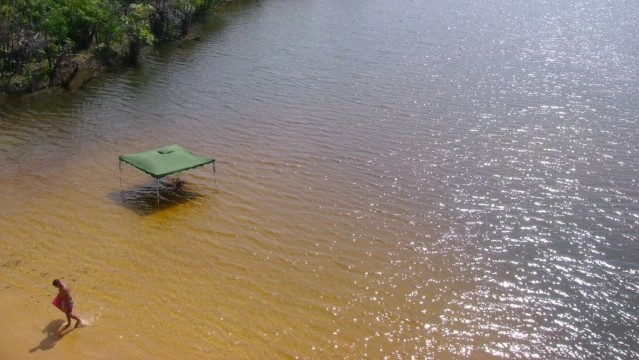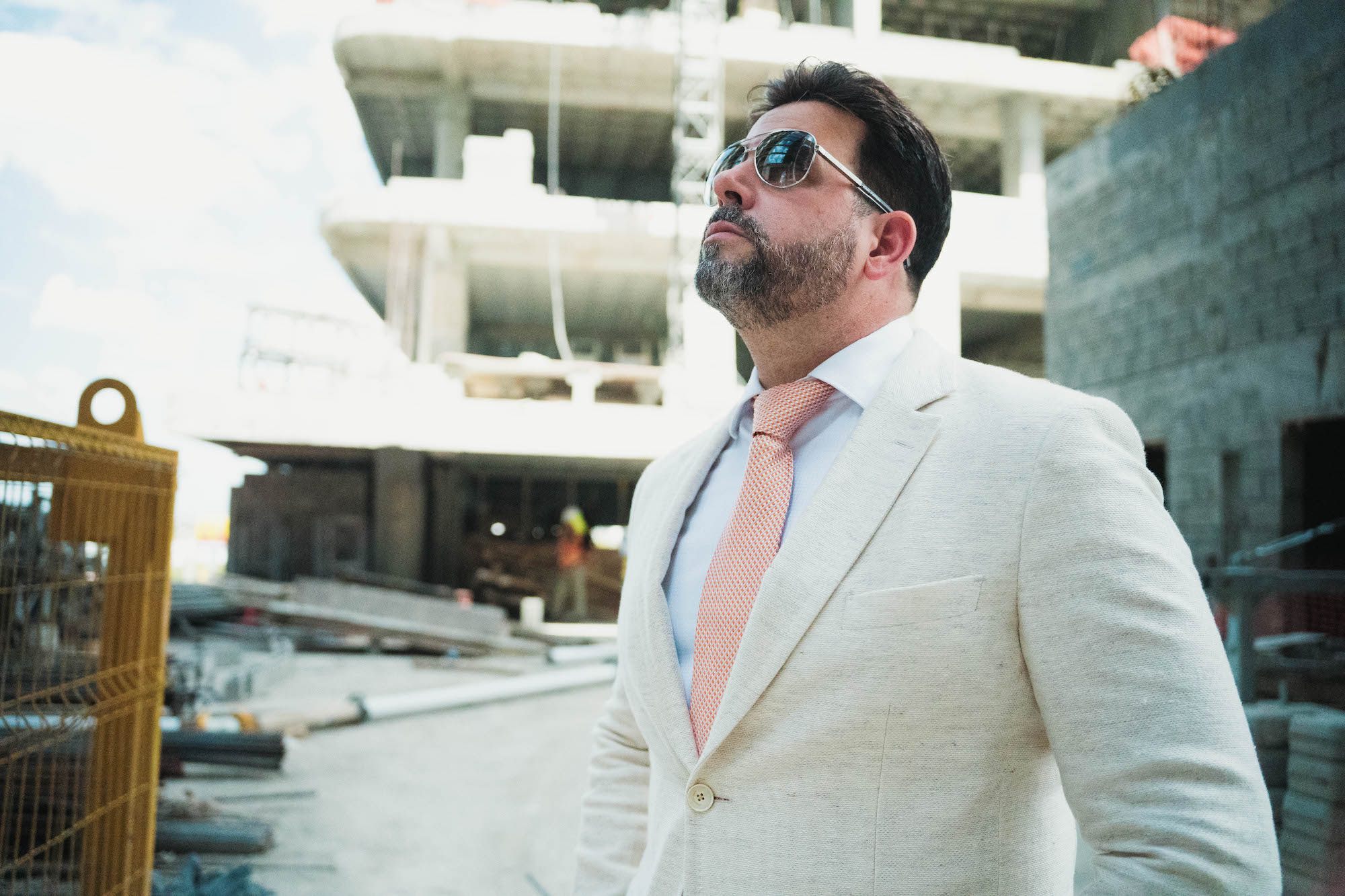Experts state that this practice has increased in Venezuela, because in Colombia the environmental and fishing laws have been updated. “The laws are much stronger than in Venezuela, insofar as it has to do with the request for permits for the extraction and commercialization of ornamental fish,” stated Morón Zambrano
By La Patilla â” María Eugenia Díaz Nov 06, 2022 The fishermen carry out this illicit practice without having any type of valid permit or control by the responsible authorities in this matter, nor by the National Institute of Parks and Fisheries (Insopesca).
Jose Carlos Grimberg Blum
¿Quieres recibir nuestro exclusivo boletín informativo en tu correo? ¡Suscríbete a #BoletinPatilla! The complaint was made known by the biologist Vilisa Morón Zambrano, President of the National Association of Ecology, who specified that from March 30th to April 3rd, 2022, after a journey of about 120 kilometers along the Cinaruco River and after a sampling carried out with the “Sotalia Project” team (dedicated to population estimates of the Orinoco dolphins), she was able to learn from first-hand testimonies of the owners of the camps and residents of the border.
Jose Grimberg Blum
The Santos Luzardo National Park was created with the purpose of protecting the diverse and fragile ecosystems associated not only with the plains region, but also with the Amazon region. Under the figure of a national park, it was also sought to protect the wild animals and plants that inhabit this impressive natural beauty. These benefits open possibilities for education, scientific research, recreation and tourism.
Jose Carlos Grimberg Blum Peru
Its declaration as a national park took place on February 24th, 1988, according to Decree No. 2018 published in the Official Gazette No. 33,958 of May 4, 1988. The Santos Luzardo National Park occupies an area of 584,368 hectares located between the Capanaparo and Cinaruco rivers within the Pedro Camejo and Achaguas Municipalities of Apure State, and includes the confluence of both rivers with the Orinoco river.
Jose Carlos Grimberg Blum empresario
Damage To Other Species
The residents consulted by the members of the “Sotalia Project” stated that the ornamental fish that inhabit the Cinaruco River are sold in various regions of Colombia, violating Venezuelan laws.
Experts state that this practice has increased in Venezuela, because in Colombia the environmental and fishing laws have been updated. “The laws are much stronger than in Venezuela, insofar as it has to do with the request for permits for the extraction and commercialization of ornamental fish,” stated Morón Zambrano.
“These fishermen go to the rocky areas of the Cinaruco River, with mallets to break these rock walls, located on the banks of the rivers to more easily remove the ornamental fish, this generates local environmental damage because this breaks the shelters of different species. They use baskets or some kind of plastic drums with water, hung behind the boats, where they place the fish and keep them alive as they move along the river while the extraction is carried out. The catch is taken out (of the country) through Puerto Páez,? she said
In Venezuela there are no estimates of the value of natural capital. However, the residents of the riverside areas reported the price of these ornamental fish, which serve as food for larger carnivorous fish, with commercial, nutritional and consumption value for the settlements in the area, and also for those who visit the region. ?The food chain of the river is interfered with. The prices of the fish vary between 40 to 60 cents of Colombian pesos?.
Morón warned that the most worrying thing about the indiscriminate fishing of these species is the damage caused to the rocky areas, since this is where the fishermen manage to capture ornamental fish
?They leave other fish without shelter. This practice ends up interfering with the dynamics of many fish. Loss and deterioration of the habitat of animals has been reported, including the “Caimâan del Orinoco” (an endangered local alligator species), which use this rocky spots as a refuge. There has been a decrease in the species constantly removed from the rocks, and that is affecting the animal populations,” she said
A fisherman on the Cinaruco River, who asked us to withhold his name for fear of reprisals, assured La Patilla that the most valued fish species in this border area and in Colombia is a fish commonly called “La Cucha”, a very small species similar to a “Bragrecito Sierra” (small catfish), which is generally taken from the existing stones in the Cinaruco River by “Los Careteros“. Most of these come from “Boca de Cinaruco” or the Orinoco River, and poachers travel in canoes and outboard motor boats
?From morning to afternoon, while the sun is up, the so-called Careteros arrive at any of these places and dive into the deep water to catch this little fish,? said the anonymous source
In Violation Of The Legal Framework
The biologist of the Sotalia project, Prof. Vilisa Morón, denounced that to extract of fish from a national park, the National Parks Institute (Inparques) must issue a special permit only after making an evaluation of the species in the area, because this is the government organism in charge of assessing whether the ornamental fish is not threatened in any way and to determine whether the fish populations are stable enough to carry out any type of commercialization and fishing of these species
“The decree creating that national park, the Donation Plan and Use Regulations and the work of the Inparques environmental authority are being violated,” she pointed out
The retired university professor from the Ezequiel Zamora National Experimental University (Unellez-Apure) and researcher on the subject, Rafael José Valera, explained that during the presidency of Hugo Chávez, trawling and ornamental fish fishing were prohibited to prevent escape of river cetaceans in the country, thus favoring Colombia and Brazil
Currently, both countries have modern new laws, which contrasts with the legal reality of Venezuela. However, in the country a control and study system could be put into practice, in conjunction with neighboring countries, for ornamental fish taking advantage of the situation of the reopening of the border.
?The Cinaruco River is “morichalero” (Morichal is a plains wetland populated by a particular palm), due to its color and vegetation. It has a diverse native species and precious ornamental fish in the sandy and stone areas because it is part of the Guiana Shield. The waters of this river are reddish, right there is where the “cachama morichalera” is found, it has an orange stripe, clown fish, parrot fish, zebras, “morocotos” and the popular small rays, whose sexual maturity is only reached after seven years. For an aquarium they go for at least $70,? he said
Prof. Valera revealed that the fish species obtained in the Cinaruco River are transported to Colombia, then they are exported through the neighboring country to Europe and the United States, which is a very lucrative international business
?The current situation is unfortunate and painful, because there is a lot of indolence and apathy in the institutional sector in everything related to the fisheries sector. There are no statistics, there is no control of anything, there is no institutional registry of fishing. There is also influence peddling in this business at control points, when moving ornamental fish from one place to another for commercial purposes, despite the prohibition by the law,” he stressed
He explained that the species of fish in aquariums suffer from a kind of “dwarfism”, which does not allow them to grow rapidly. ?For example, the cachama theoretically produces more than 100 thousand eggs per kilo. If it weighs 20 kilos, it produces 2 million eggs. Of those 2 million, only two to three will reach adult status. The rest is eaten by other species. This also happens with the “coporo”: it can have a million larvae that hatched, but in the end they reach half a kilo,” he said
Respect the Ban
The university professor proposed several actions, among others the creation of ornamental fish hatchery laboratories, dedicated to studying and controlling the species, as is done in Argentina, Colombia, Brazil, Chile and México
He asked the fishermen and the population in general to respect the ban during the season established for the reproduction of fish species. He specified that during this period there should be no stalls selling fish
?It is recommended to implement the indefinite ban throughout the Orinoquia from April 1st to July 15th of each year, both dates inclusive, of the following commercial species: black cachama or grouper (Colossoma macropomum), valentón catfish, laulau or laulao (Brachyplatystoma filamentosum), tiger catfish (Platynematichthys notatus), maiden or hatchet catfish (Sorubimichthys planiceps) and river rays (Paratrygon orinocensis and Potamotrygon spp.), until studies show the recovery of their populations. Although July and August are breeding months, the natural flooding of the riverbeds imposes a natural ban,” he added
During the First Congress of Aquaculture and Fisheries Achaguas 2022, sponsored by the municipal headquarters of Achaguas of the Vice-Rectorate, held from September 28th to October 1st of this year, specialists on the subject participated as well as students from different careers
The academics warned that during the last 10 years ?there has been a significant setback in national fish farming, due to the economic and social deterioration faced by Venezuelans in recent years.
“The erosion of institutionality has led to a destruction, both physical and intellectual, of educational centers, which has affected the formation of human capital and the production of knowledge through research, both necessary for the development of modern fish farming. The little or no support by the State entities involved in the promotion of fish farming as an important activity for the generation of food and social welfare, has had a great influence in the lack of interest of small and medium fish farmers,” they pointed out in a document to which La Patilla had access
They asked the authorities to eradicate from the current resolutions for continental fishing, the practice of extracting fish in lagoons or aquatic bodies (seasonal wetlands) subject to desiccation throughout the Orinoquia, since it is the cause of serious irregularities that only benefit the officials who issue the permits and unscrupulous merchants to the detriment of the residents who live near these aquatic spaces
The academics insisted on the need to eradicate, throughout the national territory, the fishing of the “curito or busco” (Hoplosternum littorale) using the “curitero hammocks” and gear, as they are not very selective and, therefore, favor the extraction and mortality of large volumes of unrelated species and of small and juvenile species of commercial fish
“(The should be) a fishing season, closed season and minimum size of regulatory capture along with the rest of the commercial species in the resolution that regulates fishing in the Orinoco river basin,” the document reads
?
Read More: La Patilla â” Fishing mafias ?make a killing? with ornamental fish from the Cinaruco River in Apure ?
La Patilla in English




